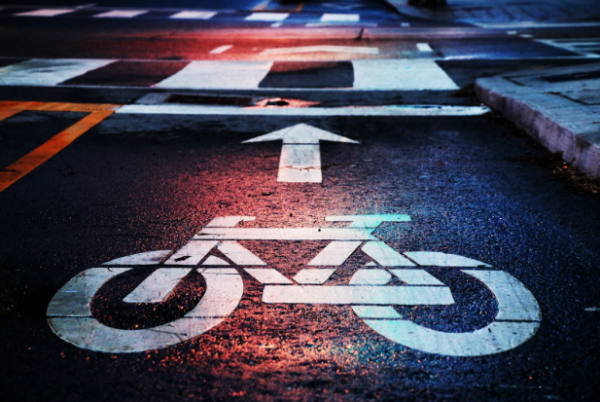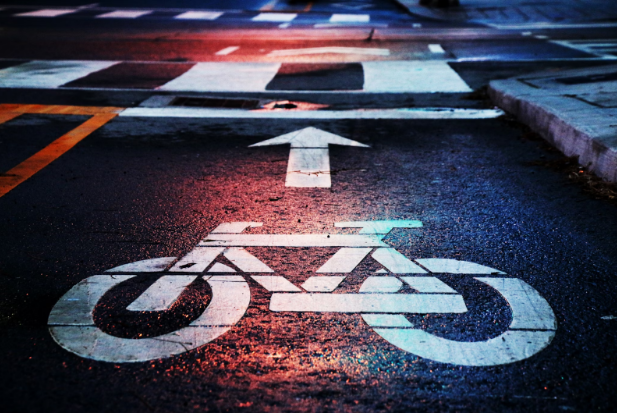Traffic laws set the rules of the road for cyclists and drivers alike. But when it comes to cycling legislation, some rules spark intense debate.
From the “Idaho Stop” to helmet mandates, these laws often pit safety concerns against practical cycling realities. Attorneys, such as the Bicycle Accident Lawyers Group, note that they also complicate insurance claims and lawsuits for injured cyclists. This friction points to a deeper question: should bicycles follow the same rules as cars, or do they need their own distinct regulations?

What Is the “Idaho Stop”?
The “Idaho Stop” law allows cyclists to treat stop signs as yields
igns and red lights as stop signs. The name comes from Idaho, which first adopted this approach in 1982. Under this law, cyclists must still slow down at stop signs, check for traffic, and yield to any vehicles or pedestrians with the right of way. At red lights, they must come to a complete stop but can proceed through the intersection if it’s clear.
Currently, variations of the Idaho Stop exist in several states, including Delaware, Colorado, Washington, Oregon, Utah, North Dakota, Oklahoma, and Arkansas, though the specific details vary by location.
The Arguments For and Against the Idaho Stop
| What Supporters Say | Critics’ Arguments |
| It matches natural cycling behavior. Maintaining momentum matters much more on a bicycle than in a car. Coming to a complete stop and restarting requires significant energy from cyclists. | It creates inconsistency. Different rules for different road users might confuse everyone and lead to unpredictable, dangerous situations. |
| It might improve safety. Counterintuitively, some research suggests the Idaho Stop could reduce accidents. By allowing cyclists to clear intersections when traffic is minimal, it may reduce the time they spend at potentially dangerous crossing points. | It could encourage risky behavior. Some fear that officially sanctioning the Idaho Stop might embolden some cyclists to take even greater risks. |
| It acknowledges physics. Bicycles move at slower speeds, provide better visibility for the rider, and can stop more quickly than cars. These physical differences might justify different rules. | It might reinforce negative stereotypes. Many drivers already believe cyclists don’t follow traffic laws. Critics worry the Idaho Stop could worsen tension between cyclists and motorists. |
| It could encourage more cycling. Making cycling more convenient and efficient might encourage more people to choose bikes over cars, potentially reducing traffic congestion and pollution. | Safety concerns remain. Without proper education on how to execute the Idaho Stop safely, some cyclists might use it as an excuse to blow through intersections without adequate caution. |
Helmet Laws: Protection vs. Personal Choice
Helmet laws represent another contentious area in cycling regulation. These laws vary widely across the United States, from universal requirements to no mandates at all.
The Current Landscape
Most states have some form of helmet law, but they typically only apply to younger riders. Only a few localities require helmets for adult cyclists.
The Safety Perspective
Research consistently shows that helmets reduce the risk of head injuries in cycling accidents. For this reason, public health officials and safety advocates often push for comprehensive helmet laws.
The Freedom Argument
Opponents of mandatory helmet laws argue that adults should have the right to decide their own safety measures. They also point out potential downsides of such laws:
- Reduced cycling rates: Some studies suggest mandatory helmet laws lead to fewer people cycling, which could reduce the “safety in numbers” effect and decrease overall public health due to less physical activity.
- Enforcement concerns: Helmet laws can lead to selective enforcement that disproportionately affects certain communities.
- The risk compensation theory: Some argue that helmets might cause cyclists and drivers to behave more recklessly due to a false sense of security, though research on this remains mixed.
Bike Lane Requirements and Controversies
Bike lane laws also generate significant debate. Some jurisdictions mandate that cyclists use bike lanes when available, while others make their use optional.
Mandatory Use Laws
These laws require cyclists to use dedicated bike lanes when they’re present and in usable condition. Proponents argue that such rules keep cyclists safer by separating them from faster, heavier motor vehicles.
Optional Use Approach
Other areas treat bike lanes as an option rather than a requirement. This approach acknowledges that bike lanes aren’t always the safest choice for cyclists. Debris, poor maintenance, parked cars, and pedestrians can make bike lanes hazardous in certain situations.
The debate extends to the “door zone” problem — bike lanes often position cyclists in the area where car doors might suddenly open. Critics argue that mandatory bike lane laws could force cyclists into this dangerous zone. This issue is even more critical in states and municipalities that forbid riding on sidewalks, such as New York.

Riding Two Abreast: Social Cycling vs. Traffic Flow
Many states permit cyclists to ride two abreast (side by side), but this practice frequently frustrates drivers who find it difficult to pass these wider formations.
For Two Abreast Riding
Cyclists point out that riding two abreast can actually make passing easier in some circumstances. A shorter, wider group takes less time to overtake than a long, single-file line. Additionally, the practice allows for social interaction during rides and may increase visibility.
Against Two Abreast Riding
Critics argue that side-by-side riding impedes traffic flow, especially on narrow roads without adequate passing space. This can lead to dangerous passing attempts by impatient drivers, potentially putting cyclists at risk.
Earbuds and Headphones While Cycling
Should cyclists be allowed to listen to music or podcasts while riding? Some states have specific restrictions on headphone use while cycling:
- California, Delaware, Maryland, and New York allow one earbud but prohibit wearing headphones in both ears.
- Florida prohibits headphones that cover both ears while cycling.
- Most other states lack specific laws about headphones for cyclists.
This debate centers on situational awareness. Critics argue that cyclists need all their senses, especially hearing, to stay safe on the road. Supporters counter that many car drivers listen to loud music with windows up, effectively blocking out road noise, yet face no similar restrictions.
Electric Bikes: Where Do They Belong?
The growing popularity of e-bikes has created new regulatory challenges. With motor assistance allowing speeds up to 28 mph on some models, where should these vehicles operate?
Different jurisdictions take varied approaches:
- Three-class system: Many states have adopted a three-class system that regulates where e-bikes can go based on their top speed and whether they provide assistance only when pedaling or can operate with a throttle.
- Bike path restrictions: Some areas restrict faster e-bikes from certain bike paths and trails, viewing them as too fast to safely mix with conventional bicycles and pedestrians.
- Age requirements: Some jurisdictions impose minimum age requirements for certain classes of e-bikes.
Finding Middle Ground
The most workable cycling laws recognize both the similarities and differences between bicycles and motor vehicles. Effective legislation should:
- Consider the physical realities of cycling
- Focus on actual safety outcomes rather than perceptions
- Acknowledge local context and infrastructure
- Include input from both cyclists and non-cyclists
- Remain flexible as cycling technology and practices evolve.
Many cycling advocates push for a “Safe Streets” approach that designs roads and policies to accommodate all users safely, rather than simply imposing car-centric rules on cyclists.
The Road Ahead
As cycling continues to grow as both recreation and transportation, these debates will likely intensify. Ultimately, the goal should be regulations that enhance safety while still making cycling practical and appealing. With thoughtful discussion and evidence-based approaches, communities can work toward laws that balance the needs of all road users, creating streets that work better for everyone.






